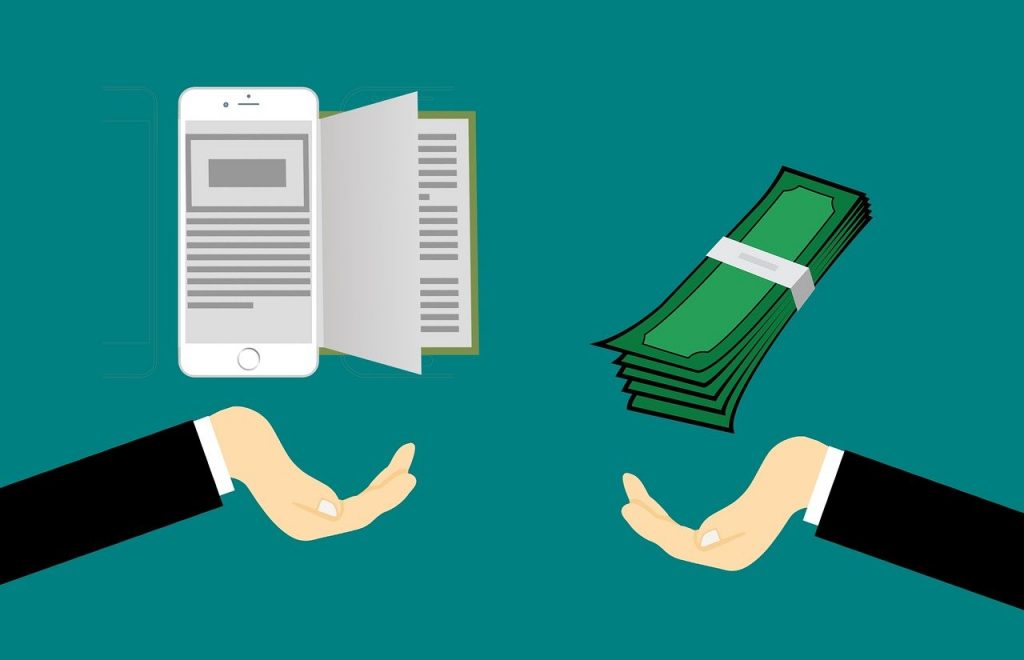Though most research agrees that paper books are here to stay, it’s impossible to ignore that ebooks have become a preferred distribution method for millions of people around the world. In the United States, 23% of the population purchased an ebook in the last year and these statistics are mirrored in many developed countries.
However, with this shift to a new format comes a new challenge: ensuring royalties are paid. When it comes to physical books, it’s simple enough: one purchase equals one copy. A customer may be able to loan their book to a friend, but they cannot also use it themselves during that period. And to produce more copies than they have purchased is very time-consuming so not really worth the effort.
When a customer buys an ebook, though, they hold potentially infinite digital copies. Without the proper ebook protection in place, a single purchase can allow thousands of users to obtain the material. Each ebook illegally distributed via a file-sharing or piracy site is a potential sale or library loan lost. The culmination is decreased royalties for those who have put in much of the work – the authors.
So, how can publishers, self-publishers, and libraries ensure the proper royalties are paid? If you ask most publishers, they’ll tell you the answer is a DRM system. But not all ebook DRM systems are made equal. In fact, the security of many of the most popular ebook DRM solutions is easily removed.
Debunking Kindle, Google Play, and Adobe DRM
Amazon, Google, and Adobe are the three biggest names in the ebook DRM space. They offer convenient protections that are often bundled in with their platforms to create an intuitive experience. Unfortunately, they’re also trivial for users to bypass.
Amazon, Google, Apple, and Adobe DRM have all been broken, and intuitive, free tools exist to remove their protections. For example, the ebook library management app Calibre can easily be extended with a plugin to remove Adobe Digital Editions, Kindle, Barnes & Noble, and Kobo DRM with a couple of button presses.
Epubor can remove even more ebook DRM systems, with all of the above plus Nook and Google Play, and TunesKit can bypass Apple DRM. Essentially, the ebook DRM systems that are supposed to protect the vast majority of ebooks can be bypassed in minutes, and the unprotected books uploaded online. It might stop some users, but for most, removal is just a google search away.
HTML 5 ebook protection
One alternative to traditional ebook DRM is using a piece of software to generate an HTML 5-based ebook that customers can view in their browser. This has the advantage of providing an interactive experience to customers in a familiar place but offers limited protection.
As browser-based ebook protection doesn’t make use of any software installed on the user’s PC, it’s unable to exert much control on how content is interacted with. Typically, HTML5 ebook DRM uses one of two methods: JavaScript or server-side protection.
Neither of these is perfect. If you want users to be able to print their books, these protections cannot stop them from printing digitally to a different format and removing all of the protection. They’re also unable to stop users from simply screen-grabbing the pages for use later.
In JavaScript implementations, the protections may additionally be able to be modified by browser plugins or the developer mode in a user’s browser. In poor server-side implementations, the ebook is decrypted on the server and relayed to the client, where it is stored in the user’s cache in plain text and therefore easily assessable.
Regardless, both ebook protection methods tend to use a simple username and password system to allow users to access the content. There’s very little to stop users from simply sharing this login info with others. Of course, users must also be online to view the ebook, which significantly reduces consumer flexibility but eliminates e-readers.
Finding the right ebook protection
To ensure ebook royalties are paid, then, you must make sure to purchase a strong ebook DRM solution that supports the following:
- A password-less system (otherwise the password can just be shared)
- Controls to prevent copy-pasting, screen grabbing, printing, and saving as unprotected files
- Ebook expiry and revocation
- Strong encryption and implementation that is not easily bypassed by third-party tools
- Offline viewing
- Device and location restrictions
To gain a positive return on interest, there’s a good chance you’ll also want to avoid solutions that charge for every ebook sold. There will be even fewer royalties left for the author if the provider takes a cut of every book you sell. Only by considering these factors and your ebook solution carefully, can you acquire an ebook DRM solution that ensures piracy is eliminated, the content remains unmodified, and royalties get paid.
